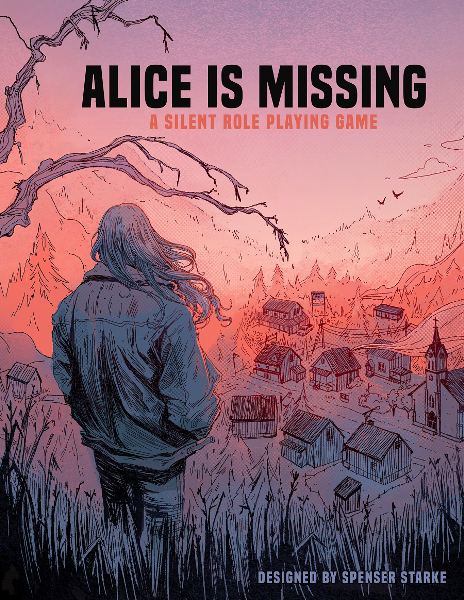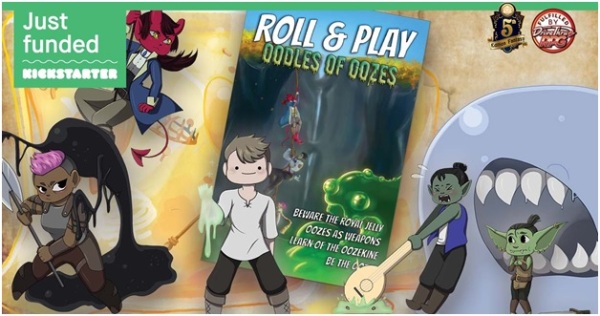Frequency & the Illusion of Control
By The Warden
PREVIOUSLY: With core mechanics in place, one of the signatures of this game (still known as Phoenix to the rest of the world at this point in space and time) is the use of even and odd numbers when players roll their dice to perform an action. Even numbers mean you’re in the free and clear (though it still depends on rolling against a target number for successful or failure), odd numbers bring on a Complication. Last week, I poked around with different possibilities for Minor Complications, those brought on by a successful dice roll with an odd number.
 When I wrapped up last week’s post, a hint was dropped for this week’s topic and I’m proud to say we’re not going to talk about that today. Proud because I’ve received some feedback regarding Complications and its frequency and that means Phoenix’s design is connecting with people. While action types were originally going to get some attention this week, a significant part of game design is adapting and revising on the fly, either because others have pointed out a potential flaw in your design or you wake up at 3am with a better spin on your idea. In this case, it’s because of the former.
When I wrapped up last week’s post, a hint was dropped for this week’s topic and I’m proud to say we’re not going to talk about that today. Proud because I’ve received some feedback regarding Complications and its frequency and that means Phoenix’s design is connecting with people. While action types were originally going to get some attention this week, a significant part of game design is adapting and revising on the fly, either because others have pointed out a potential flaw in your design or you wake up at 3am with a better spin on your idea. In this case, it’s because of the former.
After our monthly RPG session (this one featuring Savage Worlds) last weekend, I revealed the true form of Phoenix to my players. First off, my apologies for keeping the rest of you in the dark on this one but I’m keeping the actual title and concept for this game a secret until the 100th article in this series goes live. Not to worry, it’s only for another seven weeks or so as this is the 93rd addition to the Hood; hang tight, keen readers! Needless to say, the players were excited to see the concept and had some concerns regarding the frequency of Complications in the game. Specifically with Minor Complications, those “inflicted” with success. Others have shared the same concerns online and all of these helpful comments have come about with regards to frequency, the rate at which something can be expected to occur in a game.
Frequency commonly tracks matters such as success rates, damage output, healing, and other events that are randomly determined in a game. It’s where things like bell curves really come in handy because they give you an idea of how much or little frequency you can expect and the game must account for it or suffer the worst fate a game can face: being broken. If you succeed too much, danger has little meaning for players. If the frequency of critical hits is too much, it takes away from the intended impact of a critical roll. Too little and players can face the losing end of a struggle far too often, thereby losing interest in experiencing the game. It’s why most games work on a basic premise of an average, low-level or low-powered character being able to succeed at a given task 51% of the time and then advancing from there in different increments to express heroic qualities. It’s also about how frequent characters dish out as well as receive in-game effects, which is where we stand right now.
Regardless of the type of Complication (Major or Minor), any character can expect one 50% of the time based solely on the dice. Every die used in this game uses an even number of sides and therefore half of those numbers will invoke a Complication, including with a success. If we assume the average conflict (physical or social, it doesn’t matter) takes seven rounds to conclude, a player can potentially face a Complication three or four times. It could be less, sure, and it could also be more, but that’s the average we could expect. A potentially awkward frequency rate. Personally speaking, it’s one I’m game to try out but doing so now would be ignoring my audience’s immediate concerns. The proper thing to do is factor in these concerns and come up with a feasible solution to the frequency problem without drastically changing the original intention of these Complications.
BONUS ACTIONS
What I’ve come up with involves another kind of frequency, if you will, something I’ve used quite successfully in previous designs. In an effort to salvage my original topic for this week, it relates to actions (if not action types). In Killshot, characters could perform a base number of actions each turn, one dice-based (roll for success or failure) and one automatic (movement, picking up an item, anything where success is fairly implied and not incremental). When a player or the GM attempted any dice-based action and succeeds, she gains a bonus action to do something else. What this provided was a means for a character to build on their momentum and perform multiple actions in a single turn, a mechanic intended to replicate the action styles of movies and novels rather than function exactly like a game. Those formats allow for characters to throw a few punches or fire off a couple of rounds before an opponent or two could try and do the same in return, a format that would lend itself quite nicely to what I have in mind for Phoenix.
What if a Minor Complication was a choice placed on a player in exchange for gaining a bonus action on their turn? If each character starts their turn with a couple of actions – one dice-based and the other automatic – with the ability to perform additional actions when they made a successful dice roll, why not make Minor Complications the cost of that bonus action when you roll an odd number on a successful roll? For example, a hero performs a spinning kick to our villain’s forehead and rolls a 7. The kick is successful and our hero could attempt another action with that built-up momentum, but doing so means the villain has stepped back far enough that it invokes a Minor Complication (being that the villain is no longer adjacent, forcing the hero to attempt another means of attack or factor in this new distance to any proceeding attack). Or perhaps the hero would lose some balance and have to land on all fours on the ground, meaning a possible Minor Complication would force them to make their next attack from a slightly prone position. Don’t like the outcome? Then the hero’s player simply chooses not to take the bonus action and ends her turn right then and there.
This adapts the Complication from one that can occur 50% of the time to one that becomes a choice 50% of the time. It comes down to a frequency of possibility versus the frequency of actuality that lies within their control. This is what players like in their games: the illusion of control. It’s an illusion because any choices players gain in RPGs (or many other tabletop games) stems from the original result of a random roll, draw from the deck, flip of the coin, or whatever tool a game applies. Once that randomizer has produced a result, players choose what to do with it. Players never get to outright choose what they want and how well it goes off – that’s how we all got into arguments as kids in what I call the “Nuh-Uh Factor.” “I shot you, you’re dead.” “Nuh-uh, I’m wearing a bullet proof vest, it just bounces right off me.” The entire purpose of these randomizers is to eliminate bias and blame failure (or pronounce success) based on whatever tool the game provides. They represent the unexpected difficulties arising from a given situation and balance out our inherent need to be awesome with believable hindrances.
BUMPING UP COMPLICATIONS
Last week, I was looking at toning down the mechanical effect of Minor Complications into something a little more abstract than penalizing, but this possible revision can provide me with the excuse to bring back penalties into the mix. The choice of accepting a Minor Complication on a turn should have some weight behind it, something that gives the player a solid reason to ponder. If the concept of the game is that succeeding with an even number is the perfect means of completing an action, so much so that you can use another action on the same turn, then the goal is to have players make a sacrifice if they succeed with an odd number. Ooh, close, but not quite good enough. Minor Complications become a kind of deal with the Devil and he never makes it easy. If I return to this route, players can choose to take a -1 step penalty (reducing the size of their die by one level) in exchange for taking the bonus action.
It also means I can mix the two ideas into one magical blend. If a player accepts a Minor Complication, it is inserted into the situation as a descriptive event or reaction by the GM. For example, our hero successfully leaps out the window but her coat is now snagged by a shard of glass still wedged firmly into the window frame. If our hero wants to take the bonus action and do something about it, she must do so with a -1 step penalty until she has done something to counter and remove the problem in a proceeding action. Meaning if her bonus action is to tug at her coat and tear it loose, the step penalty will be gone when she takes another action. If her next action is to shoot at her pursuers, the penalty will remain until something is done about that bloody coat. Or if the hero chooses not to accept the bonus action and instead ends her turn, then the coat problem is only descriptive and is eliminated as soon as that hero’s next turn arrives… and after her enemies have taken their turn.
Hmm, decisions, decisions.
OFFERING CHOICES
Mechanically speaking, using Minor Complications and bonus actions in this manner is very simple to detail and relate directly to the descriptive elements I want the game to thrive on. Minor Complications remains as simple as a step penalty and Major Complications continue to work as damage and serious conditions against the failed character… we just have to address the handling of bonus actions. We now have to draft up its application in a way that’s simple and quick to understand.
Bonus actions are the result of a successful dice roll. When you succeed with an even number, you gain a bonus action to use on the same turn, no strings attached. Doing so with an odd number means the hero must endure a Minor Complication. What that bonus action can be depends entirely on the player and it can include an automatic one. For example, the player can simply choose to use that bonus action to run out of the room and take cover, something that does not require a dice roll. Had they not succeeded on that previous roll, their character would remain standing in the middle of this open area, fully exposed to whatever threat comes up next. Should they choose to make their bonus action dice-based, there’s still the risk of failure, leaving them exposed to whatever threat comes up next. Or maybe they eliminate any future threat entirely. It still comes down to frequency and how players decide to use that frequency in their decision making.
What we have now is a basic four-way split: 25% of all dice rolls can expect to fail with a Major Complication (including damage), 25% can expect to fail with no effect, 25% can succeed with a Minor Complication, and 25% can expect to succeed with all the awesomeness of the rainbow. We still have a 50/50 split on basic success and failure with those halves broken down into additional possibilities. More importantly, the frequency of Minor Complications drops from 25% of all dice rolls (or 50% of all successful rolls) to a number within a comfortable level of player control. An even better result is the effect of even-numbered successes – you automatically gain a bonus action without penalties. The goal of all dice rolls becomes rolling high with an even number. For that, there must be a way to accentuate that goal and allow players the opportunity to change their odds at a cost.
Something to think about for next time…



